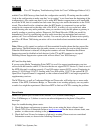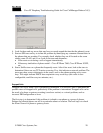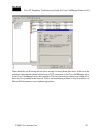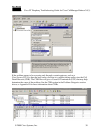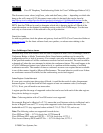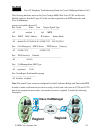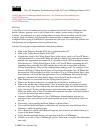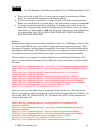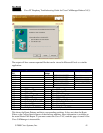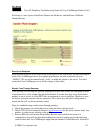
Cisco IP Telephony Troubleshooting Guide for Cisco CallManager Release 3.0(1)
© 2000 Cisco Systems, Inc. 35
Assume Cisco CallManager has been configured such that between Region1 and Region2, the
codec is G.729. The following scenarios are possible:
• If caller on Phone A initiates a call, Cisco CallManager realizes it is a
Cisco IP Phone 7960, which happens to support G.729. After the digits have been
collected, the Cisco CallManager determines that the call is destined for User D who is in
Region2. Since the destination device also supports G.729, the call is set up and the audio
flows directly between Phone A and Phone D.
• If a caller on Phone B, who has a Cisco IP Phone 12SP+, were to initiate a call to Phone
D, then this time the Cisco CallManager would realize that the originating phone only
supports G.723 or G.711. Cisco CallManager would need to allocate a transcoding
resource so that audio would flow as G.711 between Phone B and the transcoder, but as
G.729 between the transcoder and Phone D. If no transcoder were available, Phone D’s
phone would ring, but as soon as the call was answered, the call would disconnect.
• If a user on Phone B were to call Phone F (Cisco IP Phone 12SP+), the two phones would
actually use G.723, even though G.729 is configured as the codec to use between the
regions. G.723 is used because both endpoints support it and it uses less bandwidth than
G.729.
• If a Cisco uOne voicemail system is added (which only supports G.711) or a
Cisco IOS router configured for G.711 to Region1, then a transcoding device must be
used if calling from Region2. If none is available, then the call will fail.
MTP Resource Problems
An MTP resource problem could be the culprit if a call is established, but supplementary services
are not available on an H.323 device that does not support H323v2. First, determine whether you
have any available MTP resources (either software or hardware) registered with
Cisco CallManager. You can do so by using Microsoft Performance to check the number of
“MediaTermPointsAvailable.”
One MTP software application supports 24 calls (using MTP to support supplementary services
with H.323 devices that not support H.323v2), as shown in the following trace.
10:12:19.161 Cisco CallManager|MediaTerminationPointControl - Capabilities Received - Device=
MTP_kirribilli. - Registered - Supports 24 calls
One E1 port (WS-X6608-E1 card contains 8x E1 ports) provides MTP resources for 16 calls, as
shown in the following trace.
11:51:09.939 Cisco CallManager|MediaTerminationPointControl - Capabilities Received - Device=
MTP00107B000FB1 - Registered - Supports 16 calls
The following hardware trace from the Cisco Catalyst 6000 8 Port Voice T1/E1 and Services
Module, indicates that the E1 port 4/2 in the card has registered as an MTP/transcoder with
Cisco CallManager.



